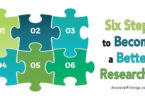So, you have been on a genealogy research trip. That is wonderful. You have probably discovered a lot of new and interesting things about your family history, and had a lot of fun along the way. You have walked where your ancestors walked, seen some of the things they saw and gained a better understanding of who they were and what their lives must have been like. A genealogy research trip is good for so many parts of your family history research. You have probably taken a lot of notes and pictures. When you get home, you need to debrief the information you have collected right away so you can make sure you remember it and make sense of it for the future construction of your family tree. Here's how to debrief after a genealogy trip.
Label Pictures Right Away
This should be the first thing you do because the details of those photos are likely to be the first thing you forget. Whether they are physical or digital photos, label them with the following information:
- Date the photo was taken
- Where it was taken
- Who is in the photo (include maiden names in parentheses on married women)
- Any special occasion for which the photo was taken, if applicable
Organize Your Photos
Once you're done labeling your photos, you need to organize them. Separate them by family branch, then by the person of the family group within the family branch, then by place, then by date. Put them in photo albums or in digital photo folders according to this organization method. Be sure to give the digital photo folders a name that is indicative of what the group of photos represents, such as Genealogy Trip to Rockbridge, VA August 3-13, 2015. This way, you will easily be able to find the photos you need when you need them or want to show them to someone. If you're putting them in a physical album, label the side of the album with something similar, using a Sharpie, or a piece of masking tape and a Sharpie. You'll be able to easily spot the photos you want on your genealogy records shelf if you do this.
Input Your Notes into Your Family Tree Software or Paper Family Tree
Get out all the notes you've taken on your trip and input the names, dates, and places you've collected into the correct portions of your family tree. Be sure to include the source citations as you input the information, so you won't have to wonder where you found the information later. Having the source citations also makes it possible to publish your research in a scholarly genealogy journal later if you decide to make your research public. You should either have photos or photocopies of the sources of the information that you took on the trip, or the sources should already be written down in your notes. Be sure to collect sources for every piece of information you find on your trip, and include them as you input it, because this means you don't have to go back and do it later. Just get it done now, and you'll have a nicely researched family tree with as little extra effort as possible.
Once you've recorded the names, dates, and places from your trip, go into the notes section of your software or your paper tree and transcribe any personal information on your ancestors you came across. This could be stories about them you found in books on your trip, interviews you did with distant relatives, stories that revealed themselves in old court documents, or any tales you came across in other locations, such as newspaper archives, local archives or museums, historical societies, churches, and other state and town sources you consulted. Be sure to add a source citation either at the beginning or end of any personal story you tell about your ancestors.
Properly Store and Label Artifacts
If you were lucky enough to come home with an artifact associated with an ancestor, such as the one that was given to you or that you purchased or even found while doing other research, take steps to protect it once you get home. Label it in a safe way that won't damage it, and include information on who it belonged to, when they owned it, what it is, and where you found it. Store it in a safe place, either on display or in storage with other genealogy artifacts from the same person or branch of your family. Do these things, and you will have a successful genealogy trip with information that will enrich your family history for generations to come who want to study it. They'll be glad you did debriefing the right way, and so will you.




